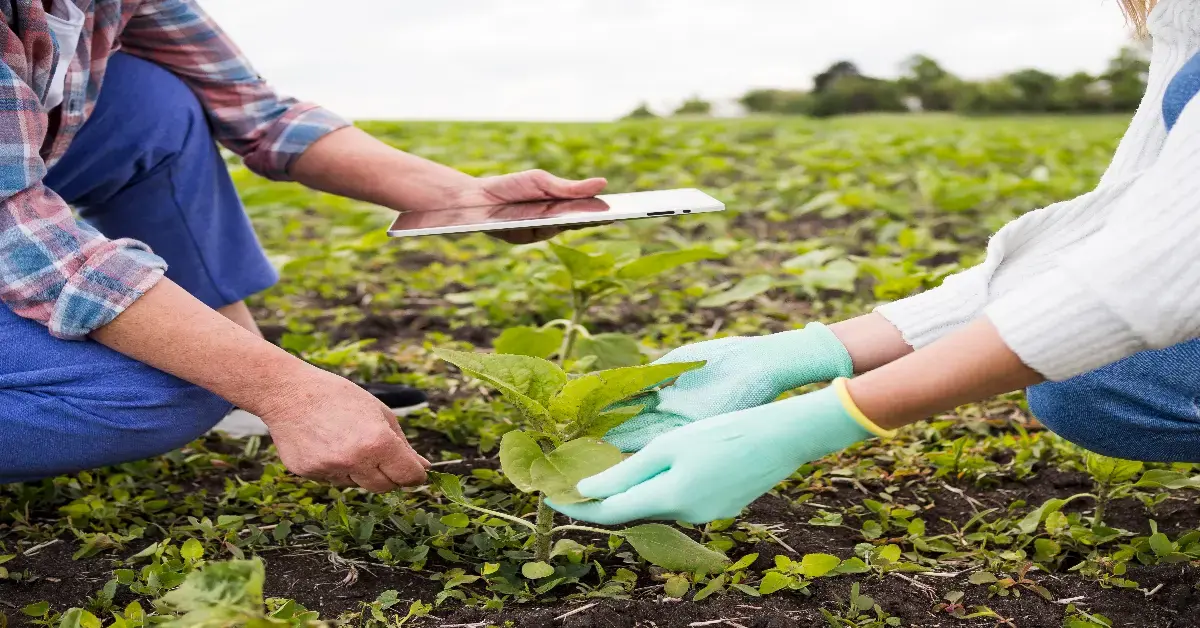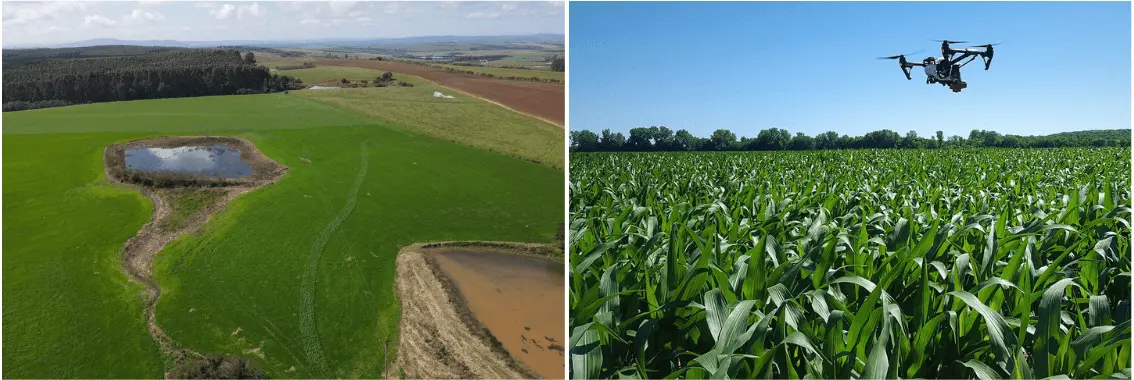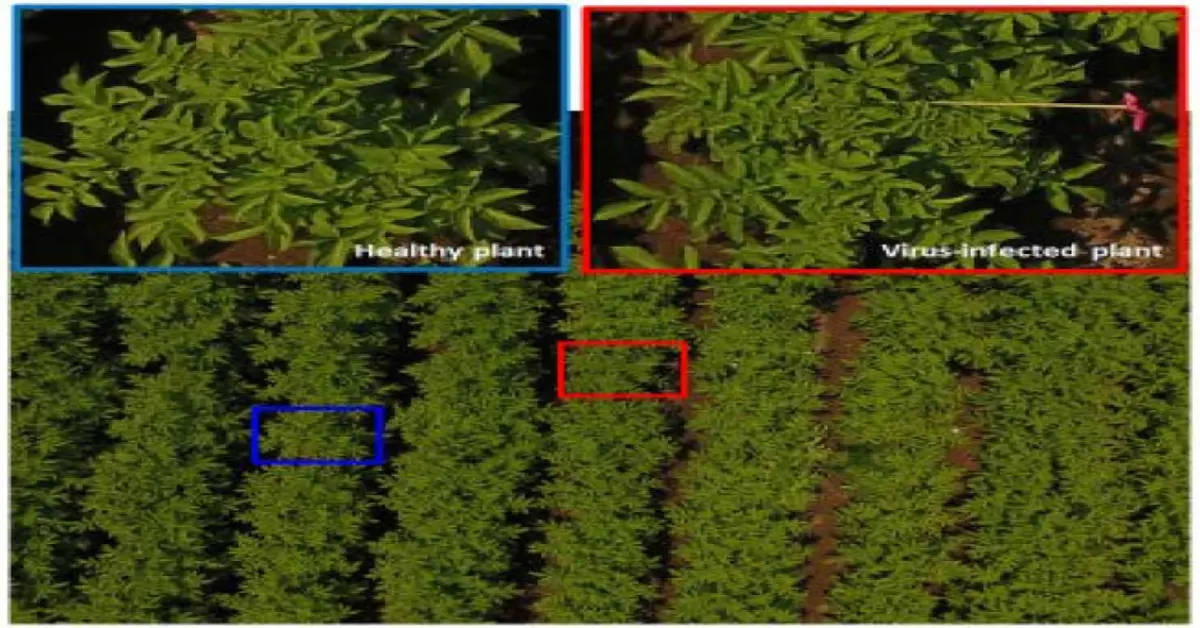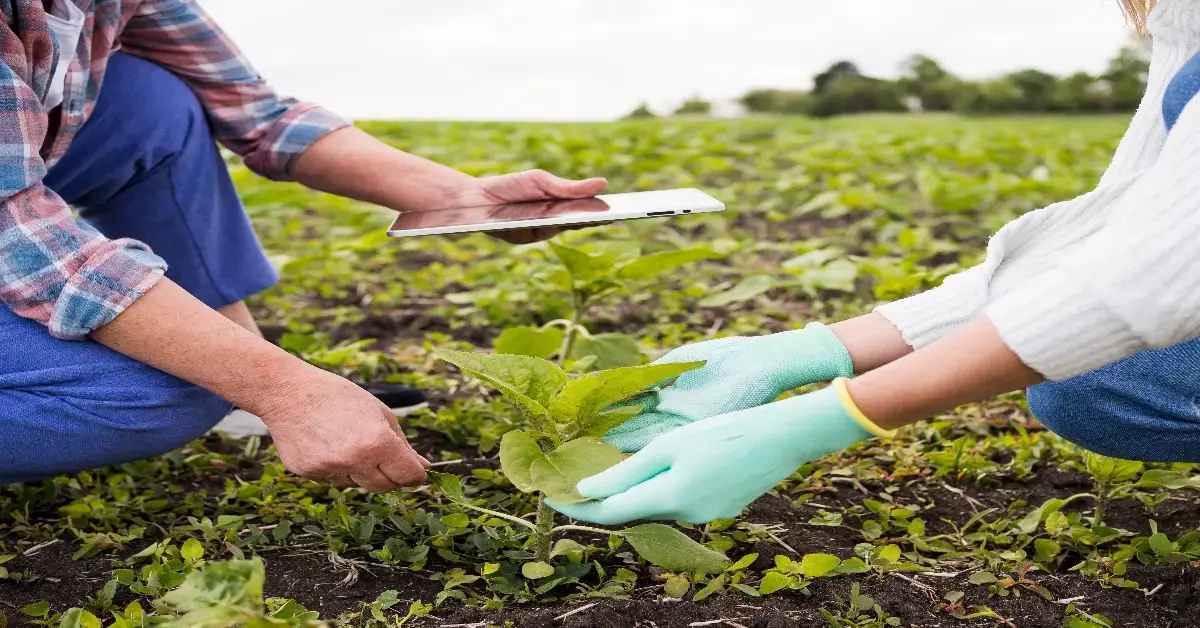Innovation and Precision: How Complex Diagnostics Are Transforming Plant Health in the Field

By: Camila Andrade, Innovation Coordinator - Agronômica
Plant health is one of the key pillars for ensuring high-quality and sustainable agricultural production. With the advancement of phytosanitary diagnostic technologies, the way problems are identified and solved has gradually changed. Complex diagnostics, which were previously limited to conventional methods, now involve a combination of innovative and agile methods, increasing precision and effectiveness in phytosanitary management.
1. The Importance of Advanced Phytosanitary Diagnostics
Phytosanitary issues can be difficult to identify, especially when they involve diseases or pests that manifest themselves in early stages. Accurate diagnostics are essential for implementing effective solutions and preventing diseases and pests that can harm crop productivity.
With the use of advanced technologies such as molecular analysis, geospatial mapping, and high-precision sensors, diagnostics are now faster, more detailed, and more assertive. This allows producers to make more confident decisions and adopt preventive or corrective measures much more efficiently.
2. How Technologies Are Transforming Diagnostics
The implementation of technologies such as drones, satellite imagery, and soil sensors has enabled a more detailed and comprehensive view of crops. These aerial monitoring systems help identify variations in the field, such as water stress, pest presence, or disease symptoms, before problems become visible to the naked eye.
Additionally, artificial intelligence (AI) and big data are powerful tools for processing large volumes of data, allowing field teams and agronomists to quickly analyze patterns and trends and make predictions about potential phytosanitary threats.
 Figure 1. implementation of drones to detect diseases in the field (Image by Denis Fedrizzi (left) and ConectarAGRO Blog, 2021 (right).
Figure 1. implementation of drones to detect diseases in the field (Image by Denis Fedrizzi (left) and ConectarAGRO Blog, 2021 (right).
3. Multidisciplinary Diagnostics: The Key to Effective Solutions
Modern phytosanitary diagnostics are no longer the responsibility of a single specialist. They require the collaboration of professionals from different areas, such as phytopathologists, biologists, entomologists, agronomists, agricultural and environmental engineers, and technology specialists. Together, these experts integrate different approaches and technologies to accurately identify problems and suggest the best solutions.
This multidisciplinary approach also allows more innovative solutions to be applied, such as the use of biotechnology for disease control or the combination of biological and chemical pesticides, ensuring a more sustainable and effective response to phytosanitary challenges.
4. Examples of Successful Cases
- In the U.S., researchers have used drones to detect the Septoria tritici fungus that infects wheat before any visible symptoms appear. Diseased plants exhibit a unique spectral signature that distinguishes them from healthy ones. This guides farmers to implement preventive management strategies (Ampatzidis et al., 2017; Dunning, 2017; Bah et al., 2018).
- Another study using drones revealed that high-resolution aerial sensing is a reliable method for detecting citrus plants infected with huanglongbing (HLB or citrus greening) (Pande & Moharir, 2023).
- Japanese scientists have used the image classification technique to detect virus-infected potato tubers, using drones to capture RGB images at an altitude of 5 to 10 meters from the ground, which has contributed to reducing the time required to analyze early and complex symptoms (Sugiura et al., 2018).
 Figure 2. Example of the image of healthy and virus-infected plants captured with RGB camera (Sugiura et al., 2018).
Figure 2. Example of the image of healthy and virus-infected plants captured with RGB camera (Sugiura et al., 2018).
5. The Future of Phytosanitary Diagnostics
As technology evolves, phytosanitary diagnostics will become even more precise and efficient. The use of AI to predict outbreaks, the integration of new monitoring tools, and continuous innovation in analytical methodologies are revolutionizing how plant health is managed in the field.
Digital transformation in agriculture is already a reality, and producers who adopt these innovations are at the forefront of a new agricultural era, in which plant health solutions are accurately monitored and phytosanitary solutions are faster, more effective, and more sustainable.
Conclusion
The combination of innovation, precision, and technology is transforming the way phytosanitary problems are diagnosed and solved. With complex diagnostics and innovative solutions, the future of agriculture becomes more promising, ensuring not only plant health but also the sustainability and profitability of agricultural production.
Entre em contato conosco para soluções personalizadas para maximizar o potencial da sua colheita: comercial@agronomicabr.com.br
References
- Ampatzidis, Y.; De Bellis, L.; Luvisi, A. iPathology: Robotic applications and management of plants and plant diseases. Sustainability 2017, 9,1010.
- Bah, M.D.; Hafiane, A.; Canals, R. Deep learning with unsupervised data labeling for weed detection in line crops in UAV images. Remote Sens. 2018, 10, 1690.
- Dunning, H. Drones That Detect Early Plant Disease Could Save Crops; Imperial College London: London, UK, 2017; pp. 1–3.
- Sugiura, R.; Tsuda, S.; Tsuji, H.; Murakami, N. Virus-Infected Plant Detection in Potato Seed Production Field by UAV Imagery; American Society of Agricultural and Biological Engineers: St. Joseph, MI, USA, 2018; p. 1.
About Cotecna
For over 50 years, we have been supporting agriculture, food and pharma, minerals and metals, and consumer products supply chains all over the world. We provide testing, inspection, and certification services to help our clients navigate evolving regulations, ensure product compliance, and support their sustainability journey.

08.04.2025
Innovation and Precision: How Complex Diagnostics Are Transforming Plant Health in the Field
Harnessing Technology for Smarter, More Sustainable Crop Protection.

03.04.2025
Cotecna COO Romain PETIT’s Visit to China
From March 24 to April 1, 2025, Cotecna Group Chief Operating Officer Romain PETIT visited China for a week-long trip.

